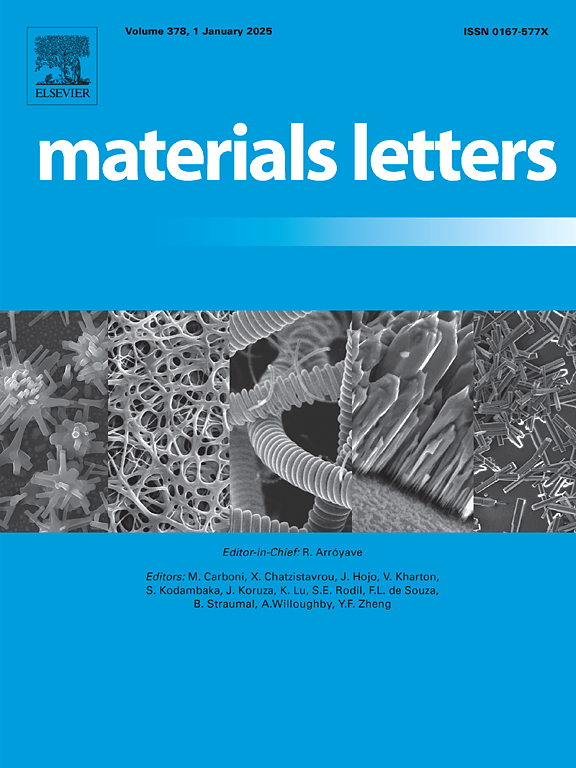Graphene-polymer composite for thin-film heating devices
IF 2.7
4区 材料科学
Q3 MATERIALS SCIENCE, MULTIDISCIPLINARY
引用次数: 0
Abstract
This study examines thin-film heating devices fabricated from polydiphenylenephthalide (PDPh)-based composites, a thermally and chemically stable polymer, incorporating technical graphene grades RG-S1 and RG-P1. The electrophysical and thermal properties of the composite films were characterized through I-V measurements and real-time infrared thermography. The results demonstrate that both materials provide uniform heating with a temperature variation of no more than 10 °C at low power consumption (0.10 and 0.15 mW/cm2 to reach 70 °C). The composite with RG-P1 graphene exhibits higher electrical conductivity and heating efficiency but is prone to crack formation under cyclic loading. In contrast, the composite based on fine-dispersed RG-S1 graphene shows enhanced mechanical stability, maintaining structural integrity after multiple thermal cycles. The findings indicate the promising potential of the PDPh/RG-S1 composite for use in flexible, energy-efficient heating devices resistant to long-term operation.
石墨烯-聚合物复合薄膜加热装置
本研究考察了由聚二苯酞(PDPh)基复合材料制成的薄膜加热装置,这是一种热稳定性和化学稳定性的聚合物,含有技术石墨烯等级RG-S1和RG-P1。通过I-V测量和实时红外热像仪对复合膜的电物理和热性能进行了表征。结果表明,这两种材料在低功耗(0.10和0.15 mW/cm2达到70°C)下提供均匀的加热,温度变化不超过10°C。RG-P1石墨烯复合材料具有较高的导电性和热效率,但在循环载荷下容易产生裂纹。相比之下,基于精细分散的RG-S1石墨烯的复合材料表现出更强的机械稳定性,在多次热循环后保持结构完整性。研究结果表明,PDPh/RG-S1复合材料在灵活、节能、耐长期运行的加热装置中具有很大的潜力。
本文章由计算机程序翻译,如有差异,请以英文原文为准。
求助全文
约1分钟内获得全文
求助全文
来源期刊

Materials Letters
工程技术-材料科学:综合
CiteScore
5.60
自引率
3.30%
发文量
1948
审稿时长
50 days
期刊介绍:
Materials Letters has an open access mirror journal Materials Letters: X, sharing the same aims and scope, editorial team, submission system and rigorous peer review.
Materials Letters is dedicated to publishing novel, cutting edge reports of broad interest to the materials community. The journal provides a forum for materials scientists and engineers, physicists, and chemists to rapidly communicate on the most important topics in the field of materials.
Contributions include, but are not limited to, a variety of topics such as:
• Materials - Metals and alloys, amorphous solids, ceramics, composites, polymers, semiconductors
• Applications - Structural, opto-electronic, magnetic, medical, MEMS, sensors, smart
• Characterization - Analytical, microscopy, scanning probes, nanoscopic, optical, electrical, magnetic, acoustic, spectroscopic, diffraction
• Novel Materials - Micro and nanostructures (nanowires, nanotubes, nanoparticles), nanocomposites, thin films, superlattices, quantum dots.
• Processing - Crystal growth, thin film processing, sol-gel processing, mechanical processing, assembly, nanocrystalline processing.
• Properties - Mechanical, magnetic, optical, electrical, ferroelectric, thermal, interfacial, transport, thermodynamic
• Synthesis - Quenching, solid state, solidification, solution synthesis, vapor deposition, high pressure, explosive
 求助内容:
求助内容: 应助结果提醒方式:
应助结果提醒方式:


